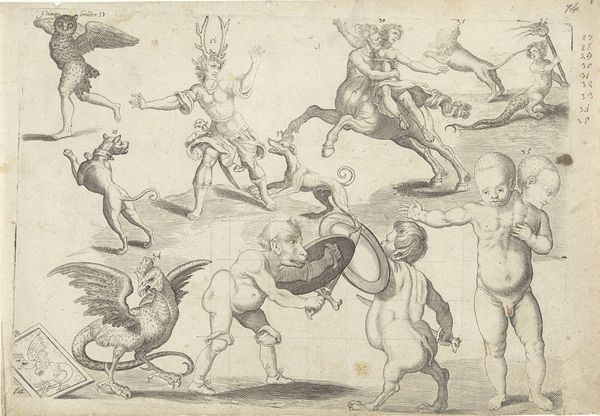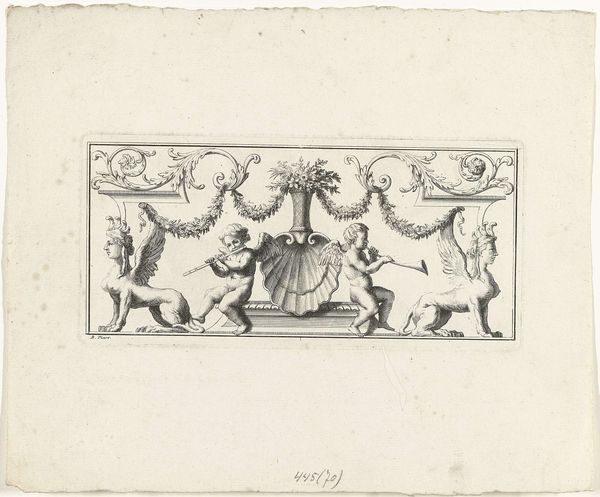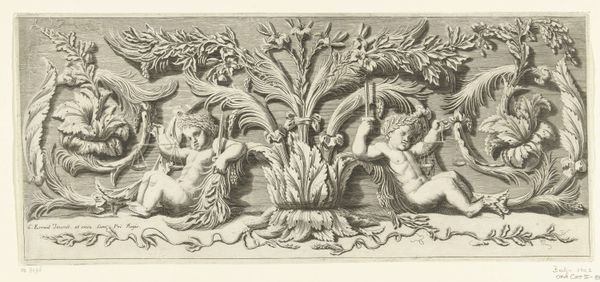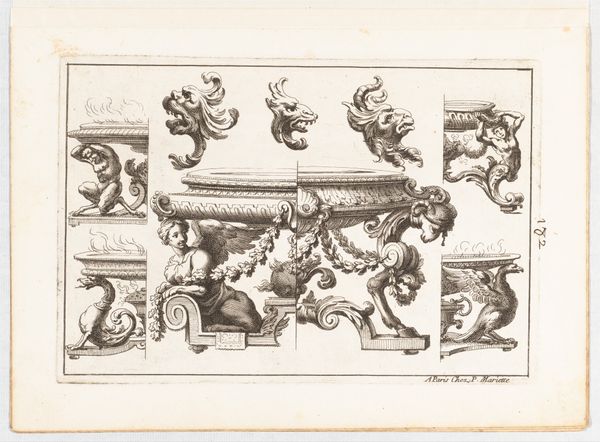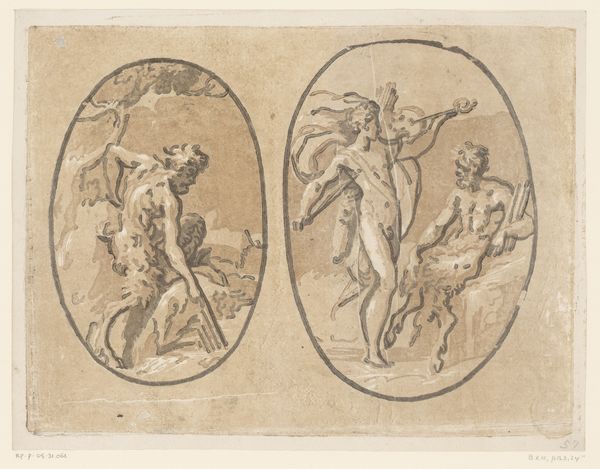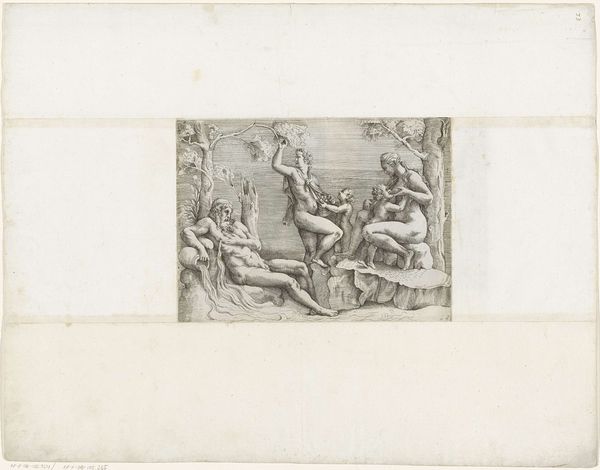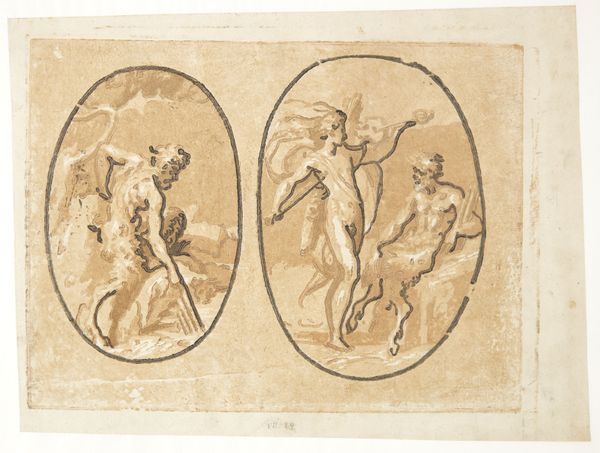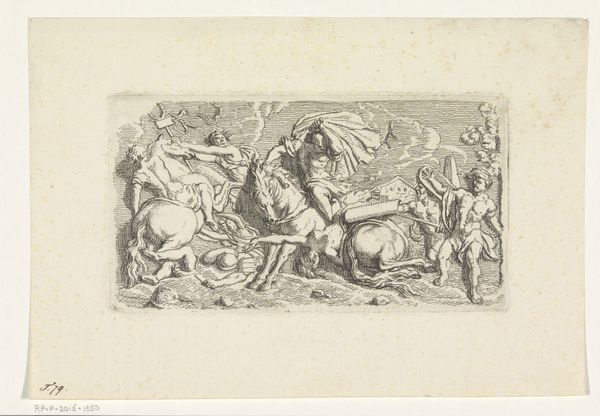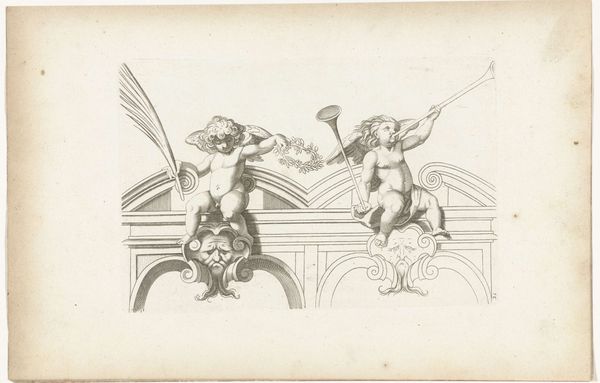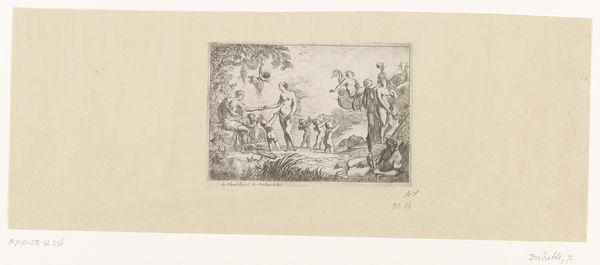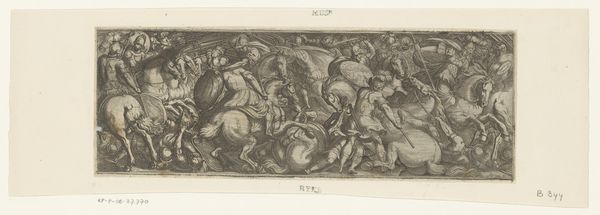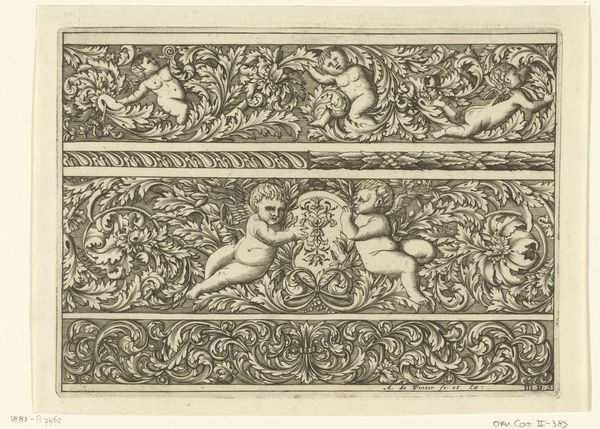
print, engraving
#
baroque
# print
#
landscape
#
figuration
#
italian-renaissance
#
engraving
Dimensions: height 98 mm, width 132 mm
Copyright: Rijks Museum: Open Domain
Curator: What an utterly charming scene! It feels like mischief on paper. Editor: Exactly! Look closer; this print, likely dating sometime between 1625 and 1669, is entitled "Putti op jacht," or Putti on the Hunt. It's the work of Giovanni Battista Galestruzzi, rendered with delicate engravings. Immediately it sets my mind off. Reminds me of playing tag as a kid, you know, but with winged cherubs and startled wildlife thrown into the mix! Curator: And how fascinating is it to see these playful putti – often symbols of innocence and love – engaging in the traditionally aristocratic pursuit of hunting? The juxtaposition highlights interesting social dynamics around privilege and the ways societal structures can normalize dominance, even casting it onto symbols of childhood purity. Editor: Dominance…hmmm. True, there is this sort of tension but there’s something joyous, like a weird dance. The composition too – the frieze-like arrangement, dividing the hunts into two horizontal registers. There’s a sense of controlled chaos within these bounds, don't you think? Curator: Absolutely. The two registers further reinforce a hierarchy, framing the hunts as controlled spectacles. We must also consider the rise of landscape art during the Renaissance; Galestruzzi is in dialogue with these trends even on such an intimate scale. Editor: Intimate, yes! It draws you in! I wonder if he was smirking when he made this...or chuckling quietly imagining this chaos, which, yes has darker tones that one only notices a bit later. Still this seems joyful doesn’t it. Curator: It certainly sparks such layered reflections. Galestruzzi, through this playful scene, asks us to confront the multiple, and at times conflicting, facets within systems of power and leisure. Editor: Well, I think it’s marvelous. It also prompts a question on how childhood, power and nature fit together…a whole mess! Curator: Precisely. It leaves us to consider who gets to play and at what cost, offering a lens for critically assessing contemporary inequities in art and broader society. Editor: This work feels timeless…and now, maybe I'll think twice the next time I see a cherub.
Comments
No comments
Be the first to comment and join the conversation on the ultimate creative platform.


